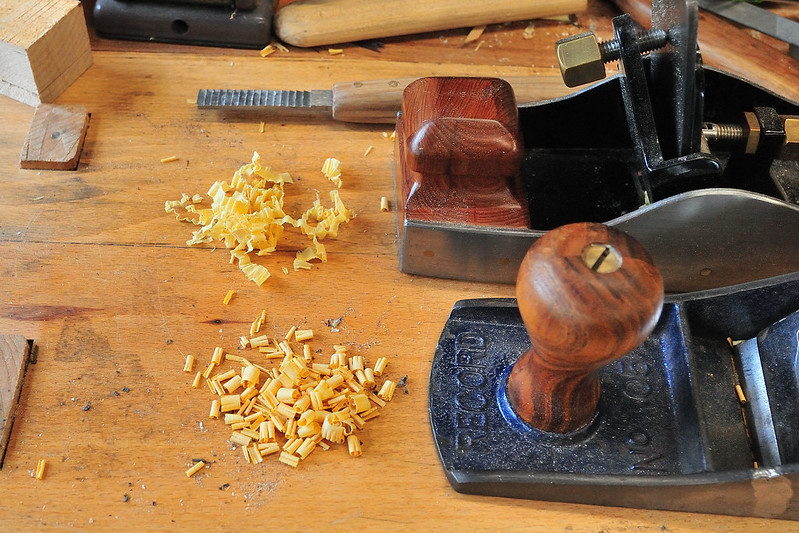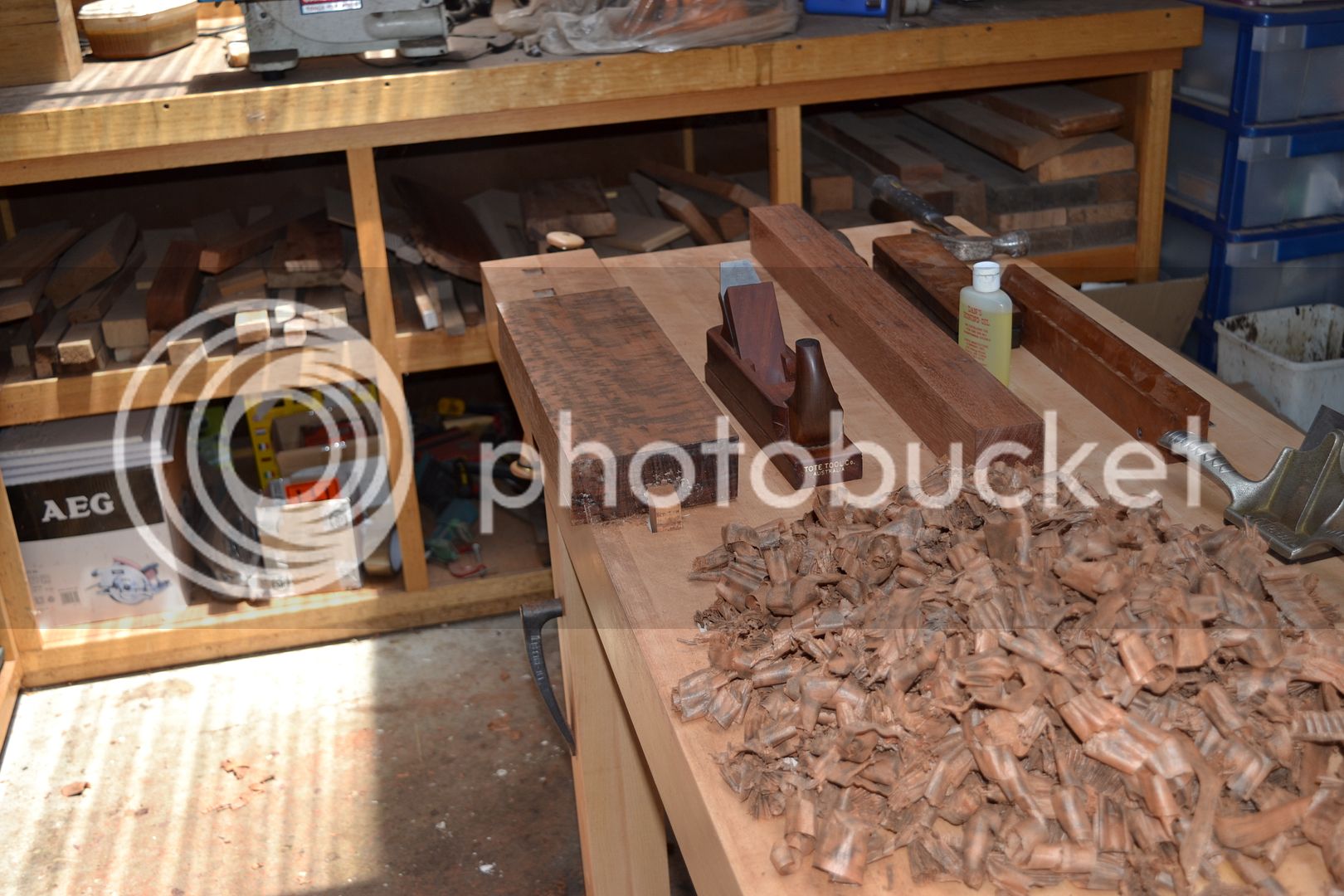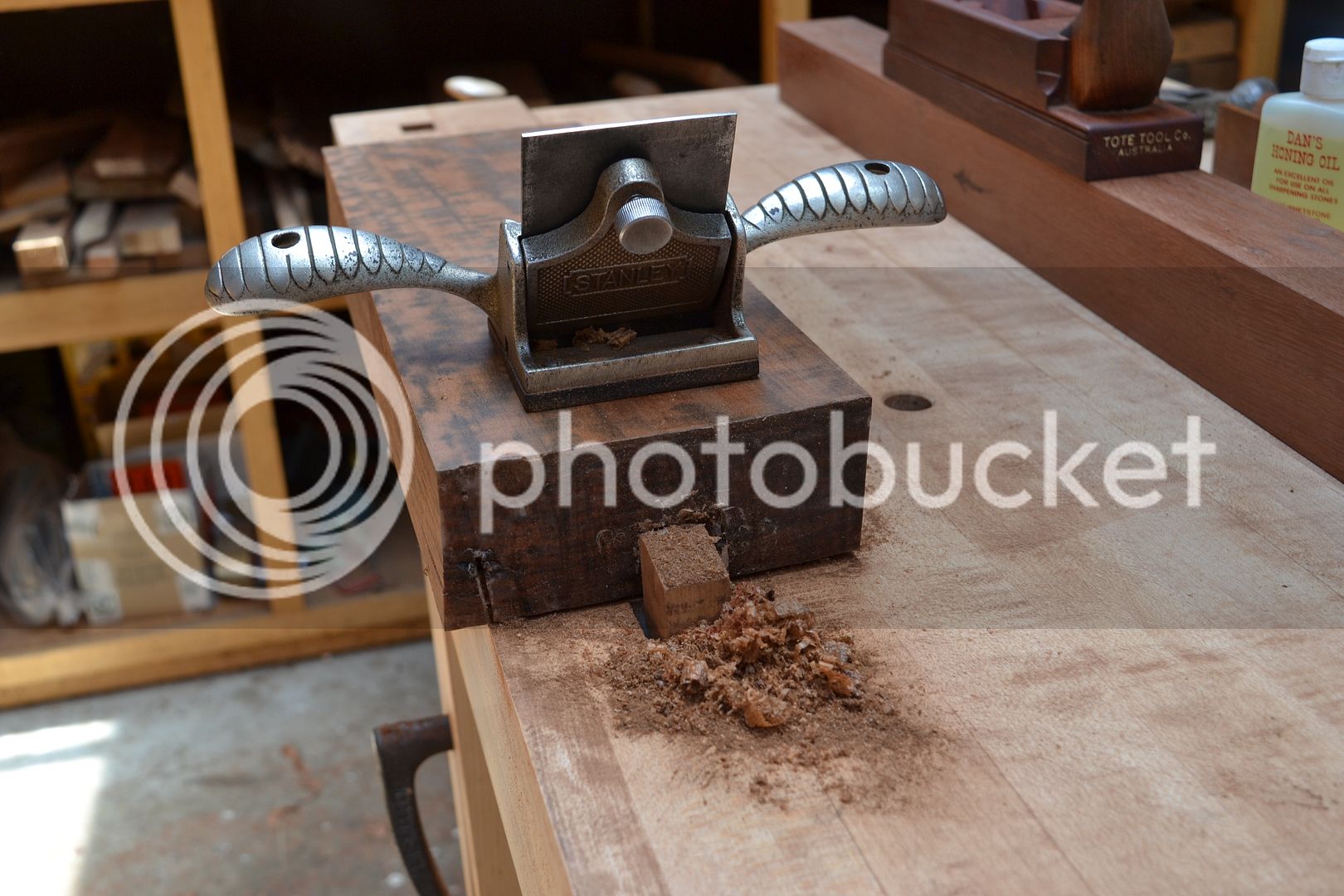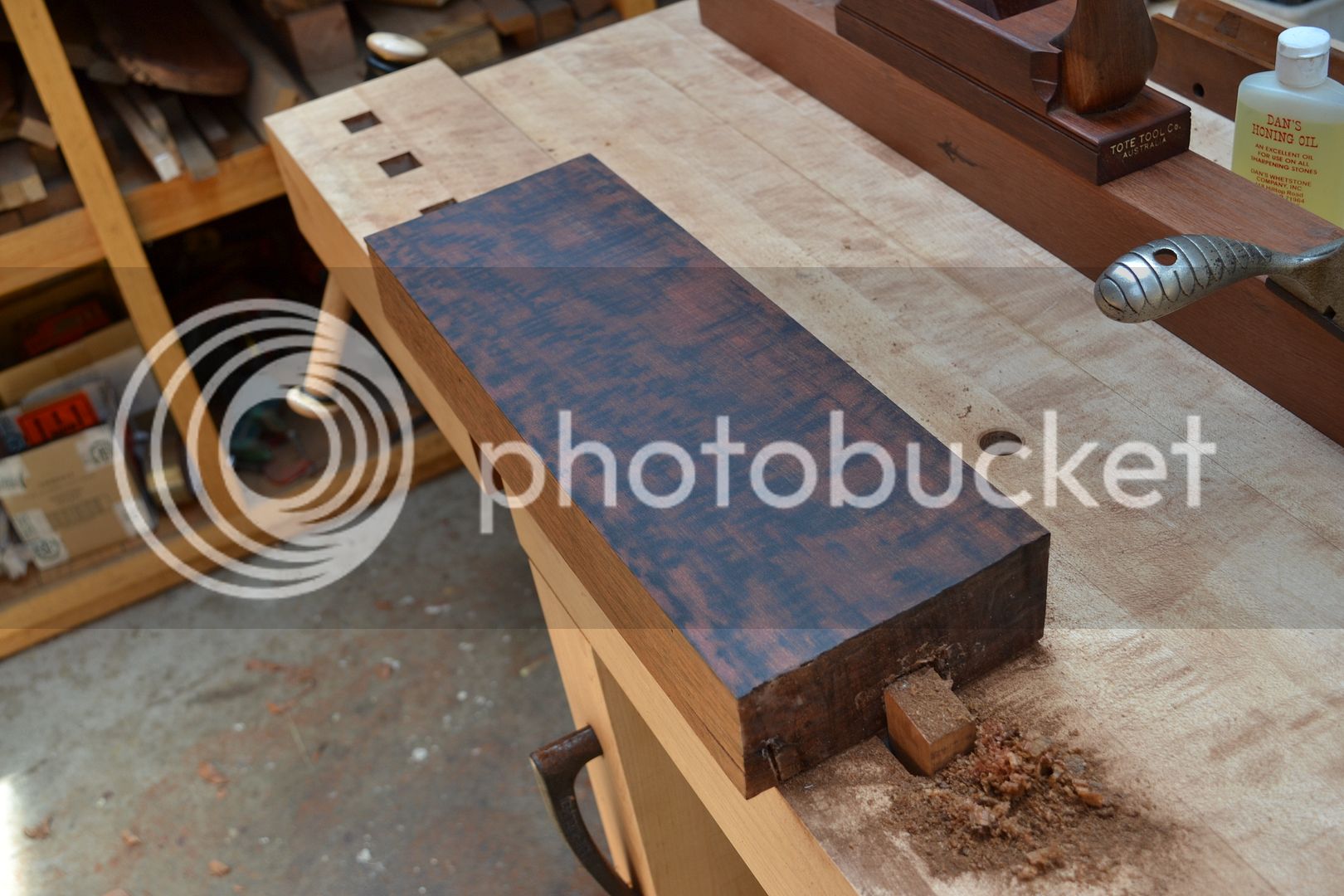swagman":3iv03tpr said:
Pete Maddex":3iv03tpr said:
Why? I am quite happy with the way it works.
I get good shavings and finish with my blade wit no burr or the one left from sharpening.
Not to shabby box wood shavings.
 Scraper V Plane
Scraper V Plane by
Pete Maddex, on Flickr
Pete
Pete; the resulting wood surface was 1st prepped flat using a smoothing plane to remove the bulk shavings, and finished off with a non hooked Scraper Plane.



If this is extended to 30 square feet for all of the material on a figured blanket chest, it would intolerable. Derek's setup would accomplish all of it in one pass.
Stewie, I saw one of your assertions in another forum that you see no difference in effort using high angle planes vs. double iron planes (despite actual tested physical evidence to the contrary - machine measured). At some point, you can't use single test pieces and feather shavings to make suggestions unless the end user is looking to prepare nothing more than test pieces and feather shavings.
The method needs to be extended out to full pieces, or it becomes similar to a lot of youtube videos - demonstration of a concept that looks really great, but nobody does the concept outside of youtube videos.
Scraper V Plane by Pete Maddex, on Flickr




































